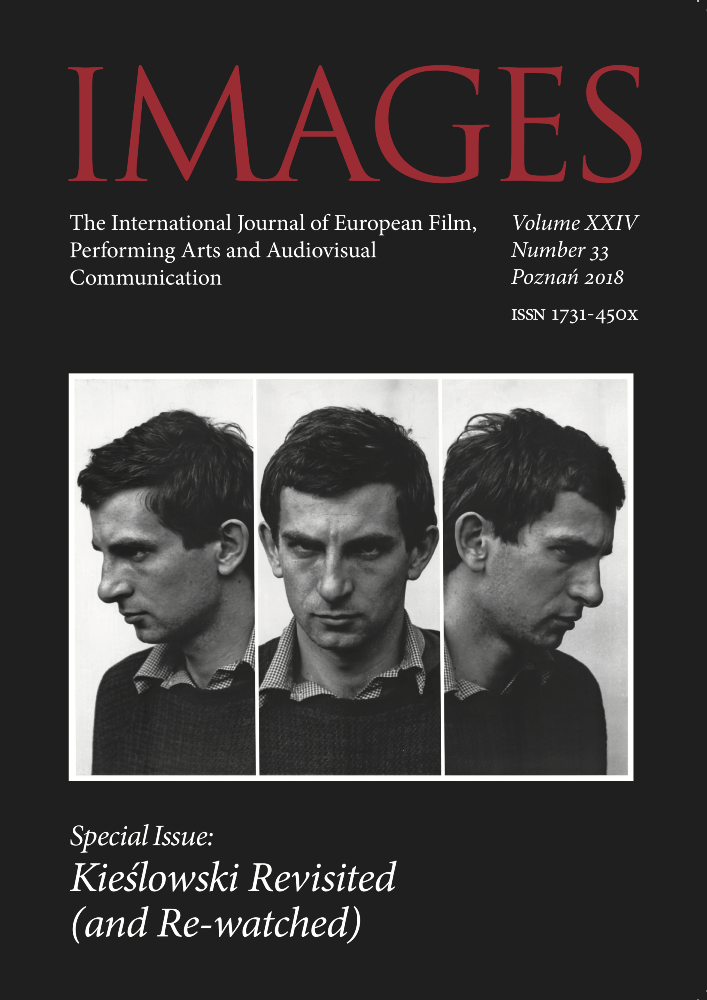Abstrakt
The statement ‘the way up is the way down’ may imply that the spiritual way to perfection lies through humility. It may however also apply to the physical world that is the source of such spiritual metaphors, and within which the actions play out of fictional characters who themselves serve as metaphors for real ones. I will argue that both meanings apply to both of these films, with a comparison between the two films enabling one to employ Malaparte’s explicit prohibition of a Christ-like position to make apparent a similar prohibition that is only implicit in Kieślowski’s film. Such physical movements provide an appropriate topography for the concern with judgment, knowledge, revenge, isolation and humiliation embodied in the male protagonists of the two films. In each case, the protagonists’ eventual divestment from programmes of judgment and revenge may be related to the prohibition Malaparte formulates explicitly: that upon human re-enactment of the Christ-like position that is the one of judgment. Here a destructive and self-destructive movement downwards, in the sense of dehumanization and extreme isolation, is countered eventually by a downward one that, in fact, leads upwards through an embrace of the humiliation of inaction. The paper examines various ways in which the object of both texts is to rediscover a ‘we’ that is rather one of solidarity than complicity.
Bibliografia
Adorno T.W., Can One Live After Auschwitz? A Philosophical Reader, Stanford 2003
Andrew G., The “Three Colours” Trilogy, London 1998
Bernard R. and Woodward S. (eds.), Krzysztof Kieślowski: Interviews, Jackson 2016
Cieutat M., “Le Christ Interdit: Morale sans issue”, “Positif” 2014 (Nov.), no. 645, p. 98
Coates P., “»The inner life is the only thing that interests me«: a conversation with Krzysztof Kieślowski”, [in:] Lucid dreams: the films of Krzysztof Kieślowski, ed. P. Coates, Trowbridge 1999
Eliot T.S., Four Quartets, London 1970
Kickasola J.G., The Films of Krzysztof Kieślowski: The Liminal Image, New York and London 2004
Kieślowski K., „Bergman’s Silence”, trans. P. Coates, [in:] Post-war Cinema and Modernity: A Film Reader, eds. J. Orr and O. Taxidou, Edinburgh 2000
Kieślowski K. and Piesiewicz K., Three Colours Trilogy: Blue, White, Red, trans. D. Stok, London 1998
Kieślowski on Kieślowski, ed. D. Stok, London and Boston 1993
Lane A., Nobody’s Perfect: Writings from The New Yorker, New York 2002
Malaparte C., The Skin, trans. D. Moore, Vermont 1988
Tyler P., Classics of the Foreign Film: a Pictorial Treasury, New York 1962
Licencja

Utwór dostępny jest na licencji Creative Commons Uznanie autorstwa – Użycie niekomercyjne – Bez utworów zależnych 4.0 Międzynarodowe.
